WHAT YOU SHOULD EAT IN JAPAN (10 delicious food)
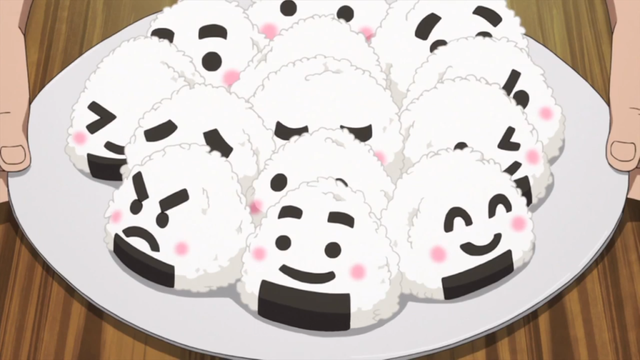
I went to Japan twice already for an overall duration of about a month, and let me tell you, Japanese food is on a whole other level. Whether you go to convenience store or attend a five-course luxury meal, your tastebuds will overflow with joy. That being said, there is much more to Japanese food than Sushi and Sashimi (Although they're obviously on this list). A lot of Japanese dishes are presented here, whether they are more traditional Japanese food based or western influenced, the thing they all share is that they are deliciously exquisite in a mouth-watering way.
1-TONKATSU - 豚カツ
豚=Ton=Pig + カツ=Katsu from katsuretsu=カツレツ=Cutlet
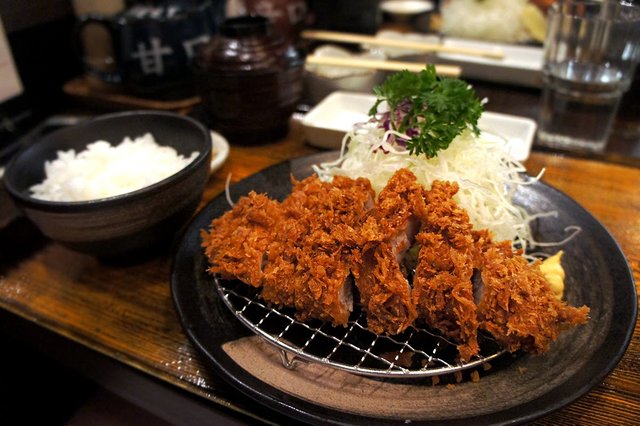
When I tell people I went to Japan, they immediately ask me how the sushi was. Everyone mentions sushi, but no one ever asks about the Tonkatsu, and this is a shock to me, because if you ask me what's the best food I ever had in Japan, that is my answer: Tonkatsu. This is a western style dish in Japan, but is very much Japanese, it basically consists of breaded, crispy&crunchy deep-fried pork cutlet, but you can find variants (chicken, potato,...). This isn't the healthiest of food you will find in Japan but is definitely one of the yummiest. There are a lot of Tonkatsu specialized restaurants over there, some offering affordable fast-food services while other are very much luxury-based.
2-TSUKEMONO - 漬物
漬=Tsuke from tsukeru=漬ける= Pickled + 物=Mono=Thing
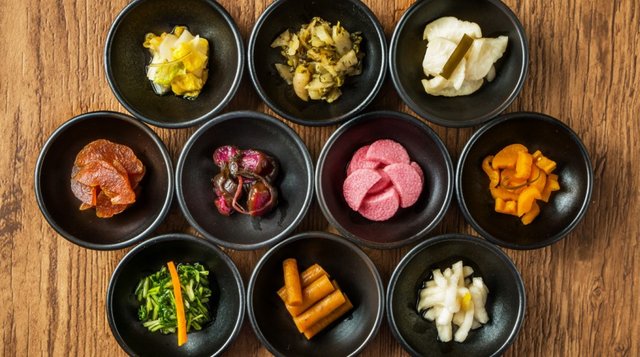
Tsukemono isn't exactly a dish, but is a part of many traditional Japanese meals. They are preserved vegetables, served as a side dish, accompaniment, garnish, or part of a course in a Japanese tea ceremony. You will probably encounter them sooner or later if you decide to eat anything in Japan. Tsukemono follow the principles of Kaiseki (a traditional multi-course Japanese dinner) that dictates that a meal should contain a variety of flavors, colors as well as provide a sensory and aesthetic outlook. You might already be familiar with a type of Tsukemono: Gari (Ginger) which is used to cleanse the palate between consumption of different types of sushi.
3-TAMAGOYAKI - 卵焼き
卵=Tamago=Egg + 焼き=Yaki=Grilled

Tamagoyaki is a classic Japanese folded omelet, made by rolling together several sheets of cooked egg. There are a lot of different types of Tamagoyaki, some can be sweet and other salty, but either type usually preserved a very light fluffy texture.
4-SUSHI - すし, 寿司, 鮨
Ultimately from the archaic 酸し=Sushi= Sour, Vinegared.
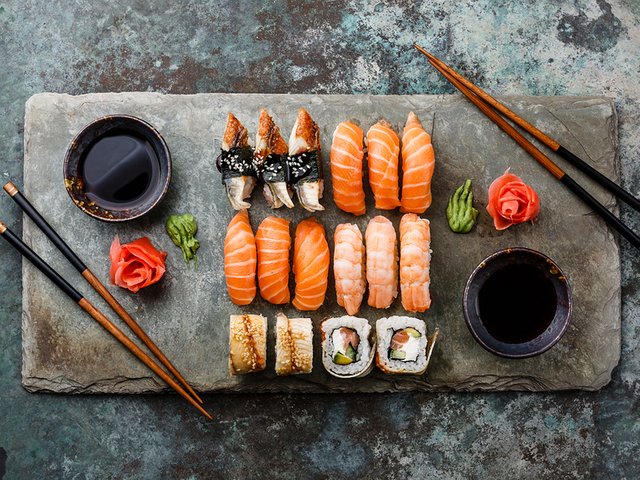
Probably the most famous Japanese dish outside of Japan, Sushi is a way to prepare rice, but not necessarily raw fish: a piece of sushi does not need to have fish in it but has to have some rice. Sushi, can be combined with a variety of different ingredients, including but not limited to seafood, vegetables, tropical food, and sometimes even chicken or meat. Its presentation and style vary widely, and anyone is bound to find at least one type of sushi to his taste.
5-SASHIMI - 刺身
刺(Pronounced 'Toge' if not linked to other character) from 刺し=Sashi=Sticking into + 身=Mi=Flesh
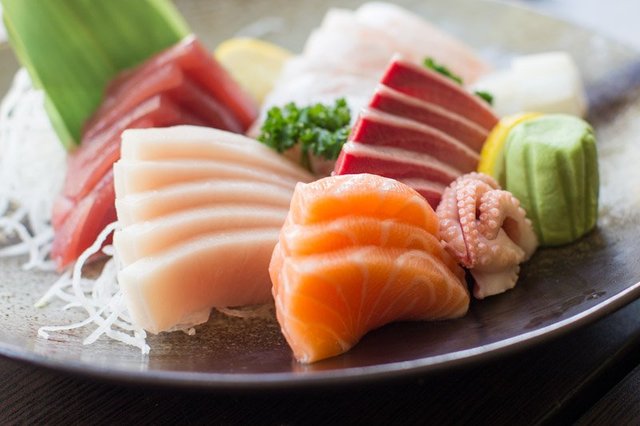
Sashimi is usually linked to Sushi, but is considered a stand-alone dish in Japan and consists of thinly sliced raw food. Commonly seafood is used, but variants such as meats (beef, deer) and plants (tofu skin, konnyaku) do exist. As a pronounced difference with Sushi, Sashimi does not include vinegared rice as a main constituents of its dish.
6-YAKITORI - 焼き鳥
焼き=Yaki=Grilled + 鳥=Tori=Bird

Basically the Japanese version of skewered chicken (Mashewe to any Arabs that might be reading this), Yakitori are cooked over charcoal, and are a popular and inexpensive dish, found in many different types of restaurants as we;; as festival food stands all over Japan. The dish itself constitutes of bit-sized pieces of chicken seasoned with either salty or salty/sweet sauces, spices and vegetables.
7-DONBURI - 丼
丼=Donburi=Bowl
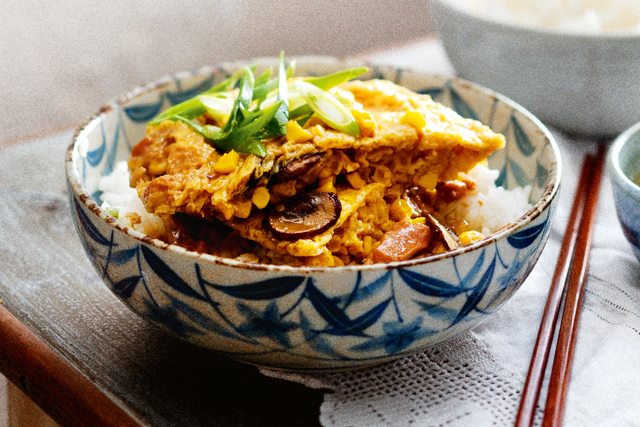
This is probably my favorite dish to have on-the-go in Japan because there's a variation called Katsudon that is basically a Donburi with Tonkatsu (mentioned in #1). Donburi is a rice-based bowl dish, which usually consists of a mix of seafood, meat, sauce and vegetables simmered together and served over a rice base. The mix can differ and, like most items on this list, Donburi can be sweet or salty.
8-OMURICE - オムライス
オム=Omu + ライス=Raisu // Written in Katakana, each character represents a sonorant (ex: オ=O)
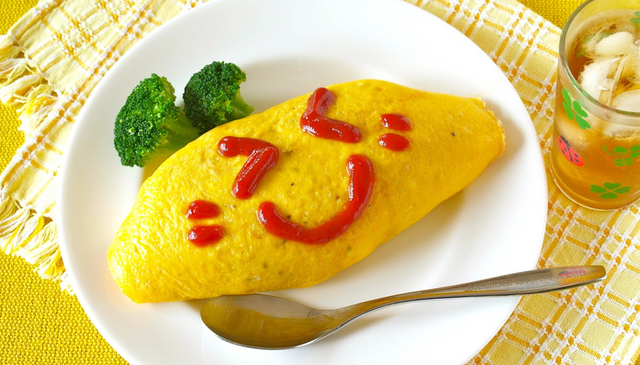
Omurice combines the English words Omelette and Rice, and is a big example of western-influenced dishes in Japan. This dish usually consists of pan-fried rice with ketchup, chicken, or beef, minced with some vegetables, and wrapped around in a thin egg omelette sheet.
9-MISO SOUP - 味噌汁
味噌=Miso + 汁=Shiru=Soup
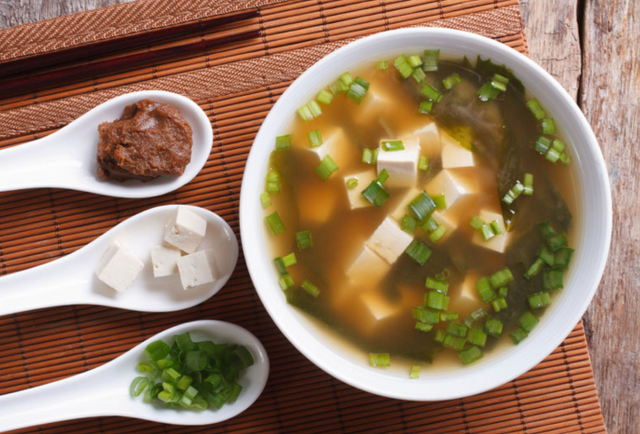
Soup is very popular in Japan: you will get a bowl of Miso soup with most of your meals there. This is because it is part of the same principle of Kaiseki principle (or Ichiju-Issai (a bowl of soup and one dish) which encourages a balanced meal) that Tsukemono participates in. Miso Soup consists of a flavoured liquid preparation made out of dashi into which softened miso paste is added. Depending on the type of restaurant or Japanese province you are in, many ingredients can be added to this basic mixture. Miso soup is one of the few items you will have whether you're having breakfast, lunch or dinner.
10-RAMEN - ラーメン, 拉麺
Ultimately from the archaic 拉麵= Lamian, a type of Chinese noodle
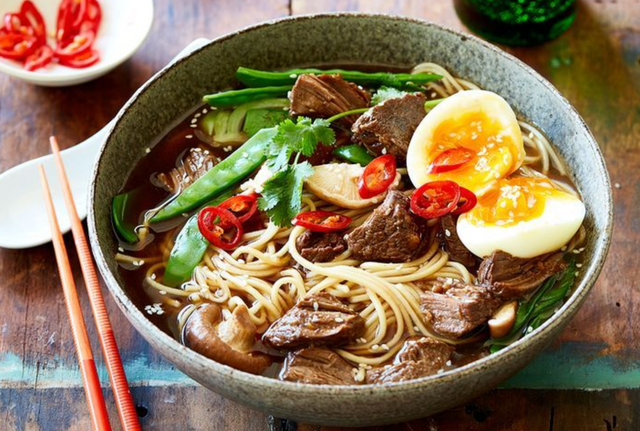
Ramen originated in China, but Japanese ramen has evolved to become a dish of its own. At its basis, it consists of the fish-based broth, the tare (sauce), and the noodles (usually Chinese and the toppings (sliced pork, dried seaweed, green onions, ... ). Almost all of the regions in Japan have produced their own regional variations to this common dish and you're bind to find one you love.
check out this link for 7 extra things : https://dewildesalhab.com/blog/2018/7/23/food-you-must-try-in-japan-2jacx
Here's to a forever satisfied appetite.